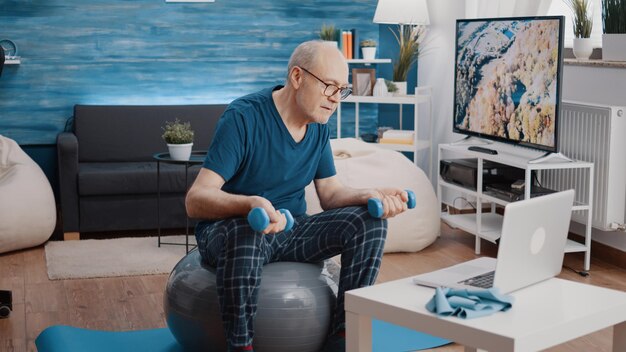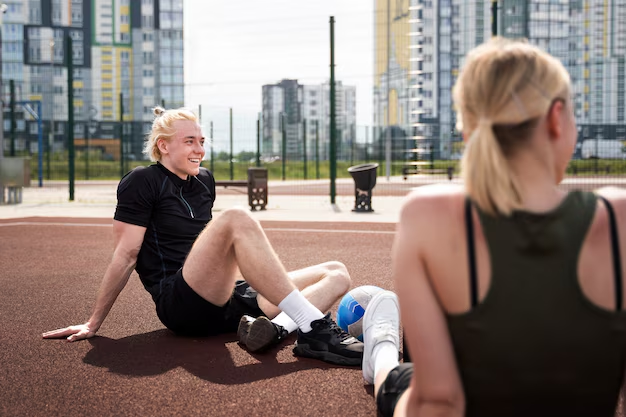Adapting Workouts for Mobility Issues Staying active is crucial for physical and mental well-being, but for those with mobility issues, traditional workouts may not be suitable. Whether due to injury, age, or a chronic condition, mobility limitations don’t have to prevent you from reaping the benefits of exercise. With proper modifications and a supportive routine, you can safely stay active, improve your strength, and enhance your quality of life. This blog explores ways to adapt workouts for mobility issues, giving you practical tips to make fitness accessible and effective.
Why Adapting Workouts is Important for Mobility Issues
- Exercise Benefits for All Bodies:
- Exercise isn’t just about physical fitness; it also promotes mental health, energy levels, and overall quality of life. Physical activity can alleviate pain, improve flexibility, and support better balance, which is especially valuable for those with mobility limitations.
- Regular activity can help manage conditions like arthritis, osteoporosis, and muscle weakness, making everyday tasks easier and less painful.
- Reducing Injury Risk:
- For individuals with mobility challenges, injury prevention is crucial. Adapting exercises to be low-impact and joint-friendly helps reduce the risk of strain or injury while still building strength and endurance.
- Improving Independence and Confidence:
- Exercise can enhance your ability to perform daily activities independently, boosting confidence and self-efficacy.
- Physical activity improves balance, strength, and stamina, which are essential for maintaining independence.
Key Principles for Adapting Workouts
A. Focus on Low-Impact Exercises
- What It Means: Low-impact exercises minimize stress on joints, reducing the chance of pain or injury. These movements avoid jumping or quick directional changes, which can be challenging for those with mobility issues.
- Examples of Low-Impact Exercises: Chair exercises, resistance band workouts, cycling, and aquatic exercises are all great low-impact options.
B. Prioritize Flexibility and Range of Motion
- Why It’s Important: Regularly moving through a comfortable range of motion helps maintain joint mobility and prevent stiffness.
- How to Achieve This: Stretching exercises, yoga, and tai chi can improve flexibility, help relieve muscle tension, and increase circulation.
C. Use Supportive Equipment and Modifications
- Supportive Tools: Adaptive equipment like resistance bands, light dumbbells, stability balls, and chairs provide stability and make exercises safer.
- Modifications: Simple modifications like performing exercises seated, holding onto a chair for support, or using lighter weights allow individuals to adjust movements according to their comfort level.

Adapting Common Exercises for Mobility Issues
Here are some popular exercises adapted for those with mobility challenges, focusing on low-impact and supported variations.
A. Seated Leg Extensions
- Why It’s Useful: This exercise strengthens the quadriceps and improves knee joint stability, which is essential for walking and balance.
- How to Perform:
- Sit in a sturdy chair with your feet flat on the floor.
- Slowly extend one leg until it’s straight and hold for a few seconds.
- Lower it back down and repeat with the other leg.
- Perform 10-12 repetitions on each leg.
B. Chair Squats or Sit-to-Stands
- Why It’s Useful: This movement strengthens the legs and core, which are key for standing and transferring between sitting and standing positions.
- How to Perform:
- Sit on the edge of a sturdy chair with your feet hip-width apart.
- Lean forward slightly, using your core and legs to push yourself up to a standing position.
- Slowly sit back down with control.
- Repeat for 8-10 repetitions.
C. Arm Raises with Light Weights or Resistance Bands
- Why It’s Useful: Arm raises strengthen the shoulder and upper back muscles, which is helpful for daily tasks like lifting objects or reaching overhead.
- How to Perform:
- Hold a light weight or resistance band in each hand.
- While seated or standing, lift your arms to shoulder height and slowly lower them back down.
- Repeat for 10-12 repetitions, keeping movements controlled and smooth.
D. Modified Plank (Using a Table or Wall)
- Why It’s Useful: Planks improve core stability, which is important for balance and posture.
- How to Perform:
- Place your hands on a sturdy table or wall at shoulder height, stepping back so your body is at a slight angle.
- Hold a plank position for 10-20 seconds, keeping your core engaged and back straight.
- Gradually increase the duration as you build strength.
E. Seated Marching
- Why It’s Useful: This exercise helps improve hip flexibility and strengthens the core, which can support walking and balance.
- How to Perform:
- Sit in a sturdy chair with your back straight.
- Lift one knee up as high as you can comfortably, then lower it.
- Alternate legs, “marching” in place for 1-2 minutes.
Safe and Effective Tips for Adapting Workouts
A. Listen to Your Body
- Explanation: With mobility issues, it’s essential to be aware of any discomfort and stop immediately if you feel pain.
- Tip: Adapt exercises to your comfort level, focusing on gradual progress. If something doesn’t feel right, modify it or skip it.
B. Start Slow and Increase Gradually
- Explanation: Begin with shorter, lower-intensity sessions and gradually build up as your body adapts.
- Tip: Increase either the duration or the intensity, but not both at once. This allows you to improve safely without overloading your joints or muscles.
C. Incorporate Balance Exercises
- Explanation: Balance exercises can reduce fall risk and improve overall stability, which is particularly beneficial for those with mobility limitations.
- Examples: Standing on one leg with support, using a stability ball, or practicing heel-to-toe walking with a handrail.
D. Consider Aquatic Exercise
- Explanation: Aquatic exercises reduce the impact on joints while providing resistance, making them ideal for individuals with arthritis or joint pain.
- Examples: Water walking, pool yoga, and gentle swimming are effective for building strength and flexibility without added strain.
Adapting Workouts Based on Specific Mobility Limitations
A. Arthritis
- Adaptations: Use low-impact exercises, avoid high-resistance weights, and focus on range of motion and flexibility to reduce stiffness and maintain joint mobility.
- Examples: Gentle stretching, chair yoga, and water aerobics.
B. Limited Lower Body Mobility
- Adaptations: Emphasize upper body strength, core stability, and seated exercises.
- Examples: Seated arm curls, overhead presses, and core exercises like seated knee lifts.
C. Limited Upper Body Mobility
- Adaptations: Focus on lower body exercises and balance work while using equipment that minimizes strain on the upper body.
- Examples: Leg extensions, seated marching, and wall-supported squats.
D. Balance Challenges
- Adaptations: Focus on exercises that enhance balance, like seated exercises and supported standing movements.
- Examples: Chair squats, stability ball exercises, and modified planks.
Building a Consistent Routine with Mobility in Mind
A. Set Achievable Goals
- Explanation: Setting realistic, specific goals can keep you motivated and focused. Start with manageable objectives like exercising three times per week or improving range of motion in a specific joint.
- Tip: Write down your goals, track progress, and celebrate small achievements.
B. Make Use of Professional Guidance
- Explanation: Working with a physical therapist or certified trainer experienced with mobility issues can provide tailored advice.
- Benefit: These professionals can help create a personalized program that addresses your specific needs and limitations safely.
C. Focus on Quality Over Quantity
- Explanation: When adapting workouts for mobility issues, it’s more important to move correctly than to complete a high volume of exercises.
- Tip: Focus on form, breath control, and slow, controlled movements rather than speed or repetitions.

Conclusion
Adapting workouts for mobility issues is about making fitness accessible, safe, and beneficial for all. With the right modifications, anyone can experience the physical and mental health benefits of exercise. By focusing on low-impact, supportive, and personalized exercises, you can maintain a consistent fitness routine that works with your body’s unique needs. Remember, progress doesn’t happen overnight, but each small step can lead to improved strength, independence, and confidence. So start today—adapt your routine, listen to your body, and make fitness a part of your journey to better health.

